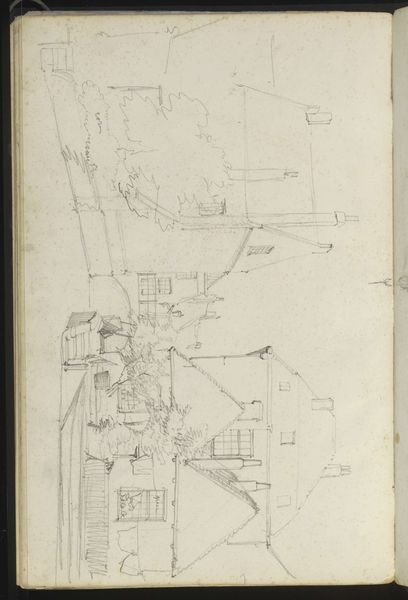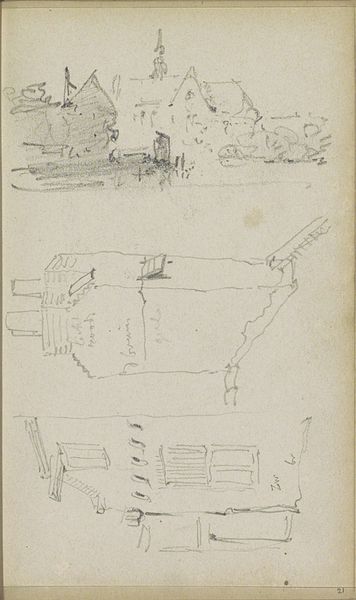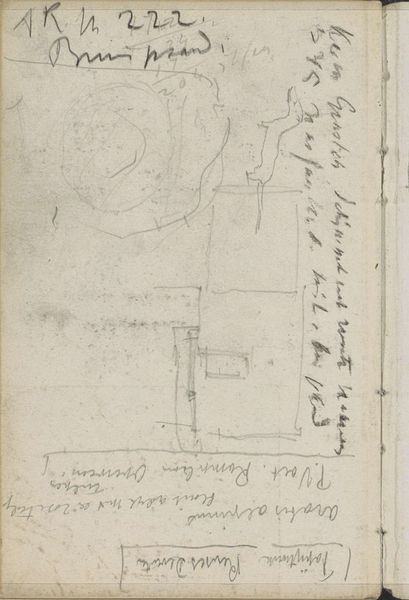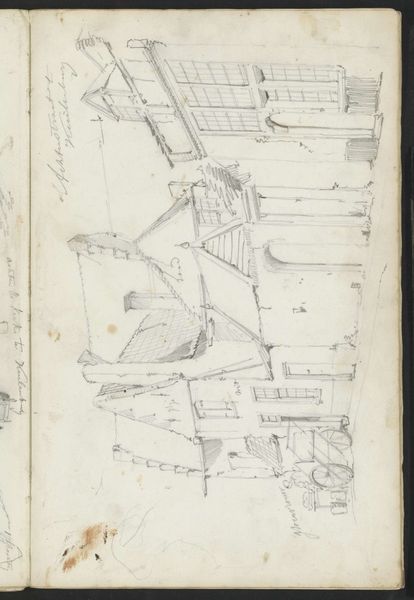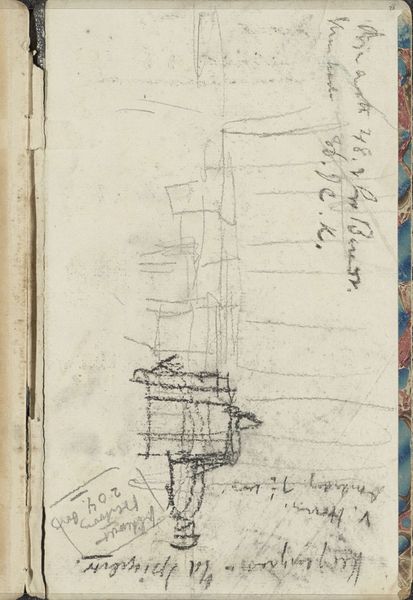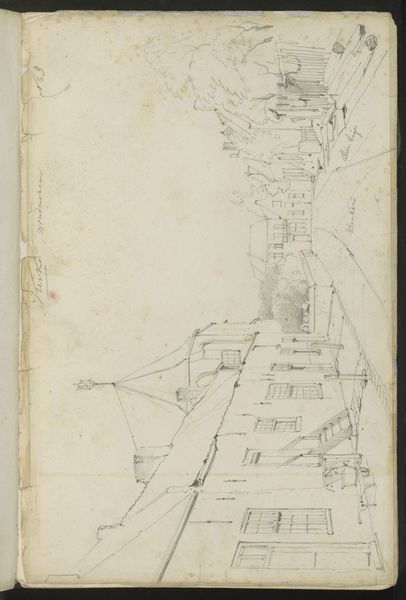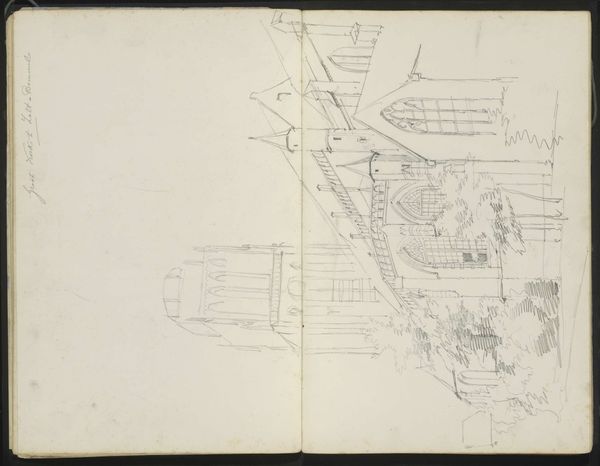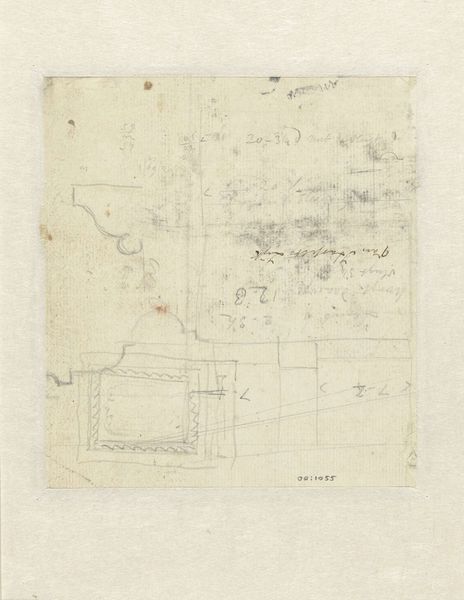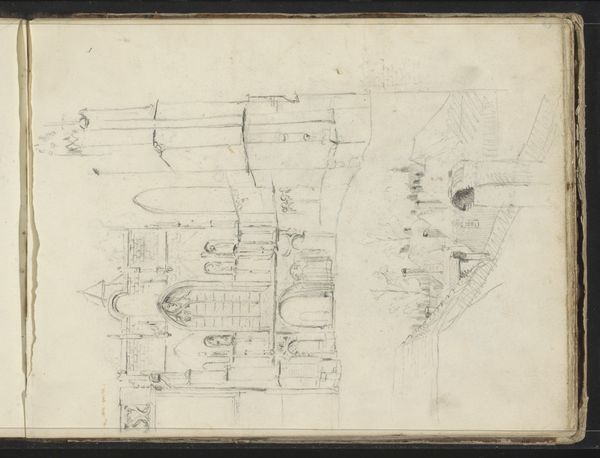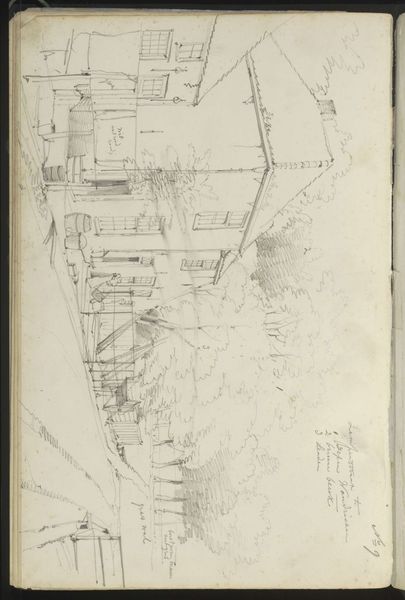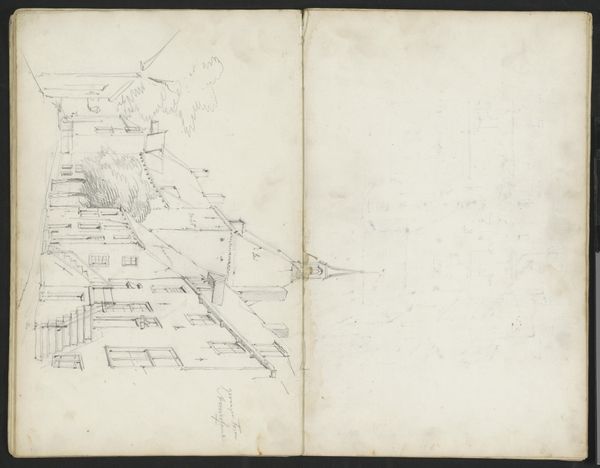
drawing, plein-air, paper, watercolor, pencil
#
drawing
#
water colours
#
plein-air
#
landscape
#
paper
#
watercolor
#
coloured pencil
#
pencil
Dimensions: height 195 mm, width 155 mm
Copyright: Rijks Museum: Open Domain
Curator: This is a fascinating plein-air sketch by Jan Brandes, likely created between 1785 and 1786. It's titled "Voorstudie van een gezicht op Galle," or "Preliminary Study of a View of Galle." The artist employed pencil, watercolor, and coloured pencil on paper. What strikes you initially? Editor: It feels...fragmented. Ghostly almost. The light pencil strokes barely conjure up the scene. There is a sense of something vanishing. Curator: Indeed. Galle, as a significant port city in then-Dutch Ceylon, held great symbolic weight for the Dutch East India Company. Brandes, travelling there, captures more than just a geographical location. The somewhat faded quality underscores the transient nature of colonial power itself. Editor: And who benefited from this "power?" Considering this sketch comes from a period ripe with resistance to colonial rule, how does it implicitly participate in a structure that violently extracted resources and labor? The fragility of the medium hints at the instability of those claims. Curator: That is a crucial reading. Consider the iconography present: a church prominently visible, and what seems to be colonial administrative buildings lightly rendered. This illustrates an imposed order, European structures claiming dominance through visual representation. We see a layering of symbolic weight. Editor: Precisely! Brandes wasn't just documenting; he was creating a visual claim. Note the text annotations throughout the page, seemingly at random. I wonder what their connection to the imagery might be. It gives me the impression that there are further notes of control and appropriation involved. Curator: This approach really opens up layers in the piece beyond a pretty landscape. It's easy to overlook such preliminary works, dismissing them as studies, but looking with such critical thought brings in vital aspects. Editor: I find this approach important with works depicting landscapes especially in relation to that period, reminding viewers that images never present neutral realities but interpretations carrying sociopolitical consequences and demands to face that truth.
Comments
No comments
Be the first to comment and join the conversation on the ultimate creative platform.
